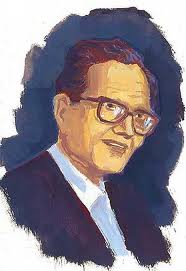 “When poverty is defined as living on $1.25 or less a day, about 40 percent of both Ethiopians and Uzbekistanis are considered poor. But by multidimensional measures that capture living standards, almost 90 percent of Ethiopians live in poverty, while only a small percentage of Uzbekistanis do.” An article in Harvard Magazine describes work of Nobel laureate Amartya Sen in developing a more nuanced way of understanding poverty. Sen wrote the introduction to the 20th Anniversary Human Development Report 2010
“When poverty is defined as living on $1.25 or less a day, about 40 percent of both Ethiopians and Uzbekistanis are considered poor. But by multidimensional measures that capture living standards, almost 90 percent of Ethiopians live in poverty, while only a small percentage of Uzbekistanis do.” An article in Harvard Magazine describes work of Nobel laureate Amartya Sen in developing a more nuanced way of understanding poverty. Sen wrote the introduction to the 20th Anniversary Human Development Report 2010
Tags: measurement, poverty, Poverty Analysis, Sen

A related story… It’s time to focus on poor people – not poor countries according to the Guardian.
‘The poor’ is one set of people I think, and they are everywhere. How to know them has been the hunt of the Community for years and years and years. It has haunted me for years and years as to what makes a person to be considered ‘poor’. Now, I think it is a ‘poverty of priorities’ here in the states, and a ‘poverty of survival level’ in other locations. But I don’t really know: ‘who is poor’?
However, I do know this: ‘if you are hungry, you are poor; if you are homeless, you are poor; if you are thirsty, you are poor; if you are sick, you are poor; if you need clothing, and have little, you are poor.
If you are in need, you are poor.
And those who have, owe it to those who have not, to give.
To the Nobel Laureate guy, I say: money doesn’t measure poverty. Money is a measure of greed, because, after all, money is only a medium of exchange. Money is a symbol. His ‘$1.25 a day’ concept means nothing. (Except that he measures stuff in symbols.) He has not yet met a person who is needy(poor), I think.
To the ‘Halfinten.org group, I say: you can’t cut something if you have not defined what it is. First, define poverty. gh